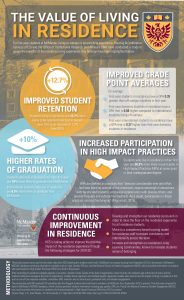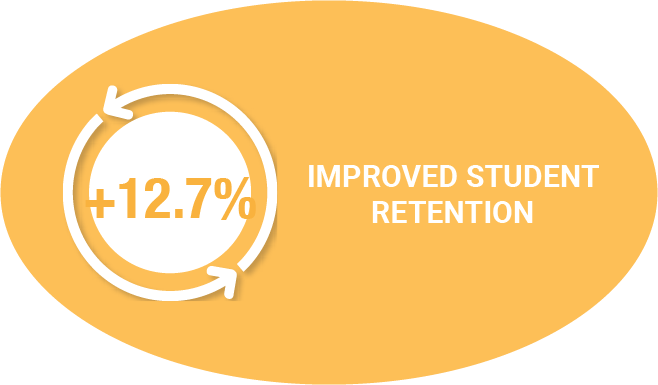
IMPROVED STUDENT RETENTION
Students living in residence are 12.7% more likely to be retained from first to second year. This is an increase of 1.2% from 2018.
HIGHER RATES OF GRADUATION
Students who live in residence for their first year are 10% more likely to graduate from McMaster.
International students who live in residence are 6.5% more likely to graduate from McMaster.
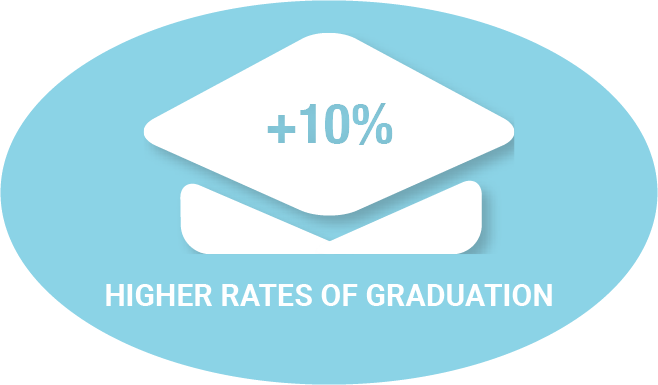
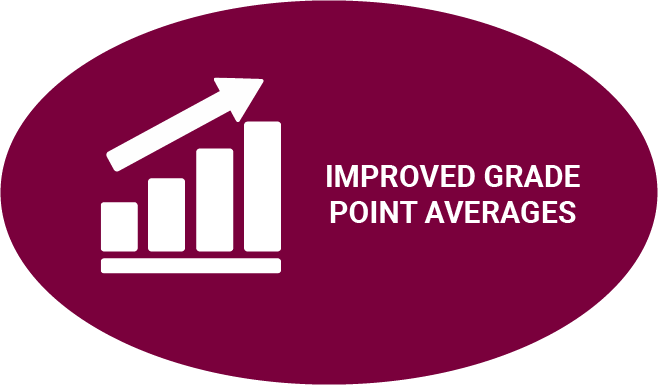
IMPROVED GRADE POINT AVERAGES
On average:
-
First-year students in residence have a GPA 0.35 greater than off-campus students in first year
-
First-year domestic students in residence have a GPA 0.68 higher compared to international students living off-campus
-
First-year international students in residence have a GPA that is 0.37 higher than first-year domestic students in residence
INCREASED PARTICIPATION IN HIGH IMPACT PRACTICES
Students who live in residence in their first year are 26.3% more likely to participate in High Impact Practices (HIPs) at some point in their undergraduate degree.
HIPs are defined as practices that “demand considerable time and effort, facilitate learning outside of the classroom, require meaningful interactions with faculty and students, encourage collaboration with diverse others, and provide frequent and substantive feedback. As a result, participation in these practices can be life-changing” (Kilgo et al., 2015).
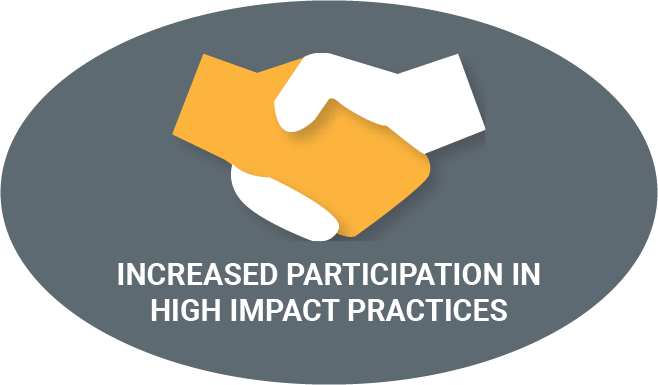

continuous improvement in residence
HCS is taking action to improve the positive impact of the residence experience through the following strategies for 2019-20:
-
Develop and strengthen our residence curriculum in order to raise the floor on the residence experience for all residence students
-
Move to a competency-based training model for residence staff to ensure consistency and intentionality across the team
-
Increase and strengthen our residence Living Learning Communities, known to increase students’ sense of belonging
METHODOLOGY
Three data sources were used for this study: data from HCS detailing the students who lived in McMaster on-campus housing from September 2013 to the present; McMaster’s MOSAIC database containing all predictor variables such as: Age, Gender, GPA, etc.; and the National Survey of Student Engagement (NSSE), which provided information on students who participated in High Impact Practices (HIPs) from 2013 to the present.
After controlling for predictor variables (gender; visa status; student’s home faculty at the time of registration; cohort of entry; the student’s age at the time of entry’ and the student’s admission average at the time of registration), multiple linear regression models were used to test the impact of living in residence in first-year or one of four response variables: cumulative GPA; retention rate to second year; graduation rate; and student engagement.
The partnership with IRA involved HCS providing data that flagged students who had lived in residence at McMaster from September 2013 to present. This data was compared to data in McMaster’s MOSAIC database, which contains pertinent student information including age, gender, GPA, etc. Finally, the National Survey on Student Engagement (NSSE) was used to provide information on students who had participated in High Impact Practices (HIPs) from 2013 to present.
Source: Kilgo, C.A., Ezell Sheets, J.K. & Pascarella, E.T. High Educ (2015) 69: 509. https://doi.org/10.1007/s10734-014-9788-z

